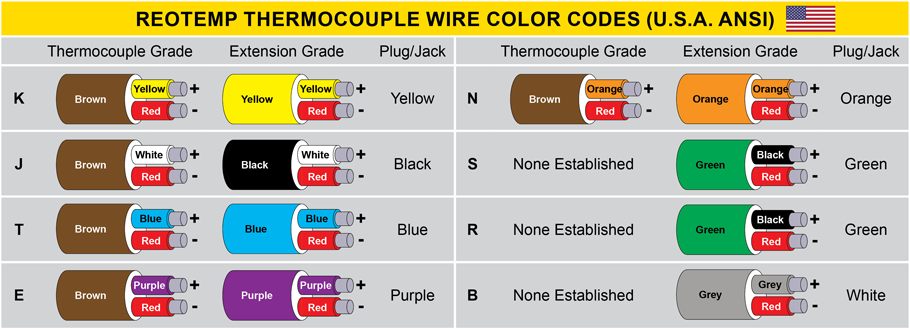What’s the maximum lead wire length for a thermocouple or RTD?
How long can RTD lead wire be? How long can thermocouple lead wire be? What about 4-20mA transmitter lead wire? Find out in this video.
What makes thermocouple wire types different?
There are multiple types and grades of thermocouple wire. Each type of thermocouple wire has a specific combination of metal alloys. This combination is what defines the type of thermocouple. For example, a type K thermocouple is made when a wire of Nickel-Chromium is welded to a wire of Nickel-Alumel. The grade of the wire is dependent not only on the combination of alloys used, but also on the purity of those alloys.
For a full list of thermocouple types and corresponding thermocouple wires, see our thermocouple types page. For a full selection of Reotemp products featuring thermocouples visit the thermocouple landing page.
What is the difference between thermocouple wire cable and extension grade wire?
Thermocouple grade wire is used to manufacture thermocouple probes. Thermocouple grade wire is normally used for the junction and inside the stem sheath.
Extension grade wire is used to extend from the thermocouple probe to the control system or digital display. Extension grade wire is more economical due to lesser grade alloys being used. Extension grade wire is also not generally within the process and does not play as critical of a role as the thermocouple grade wire. It also does not experience the temperature extremes and cycling of the sensor itself.
In many industrial applications, a sensor is located in a process pipe far away from the control room. This means that wire must be run a considerable distance back to the control room to get the temperature reading. Using more expensive thermocouple grade wire to accomplish this is unnecessary. Extension grade wire will do the job.
What are the US ANSI thermocouple color codes for each type of thermocouple?

What do thermocouple wire colors indicate?
A thermocouple can be identified by the color of its wire insulation. For example, in the United States a type J thermocouple grade wire has one red wire and one white wire, typically with a brown over jacket. A type J extension grade wire also has one red wire and one white wire, but it has a black over jacket. As a general rule the red wire of a thermocouple or extension wire is negative and the positive wire is color coded according to the type of thermocouple. Different countries use different color codes.
What are Special Limits of Error (SLE)? What are Standard Limits of Error?
Standard limits of Error: These thermocouples use standard “thermocouple grade” wire and make up the great majority of sensors.
Special Limits of Error: These thermocouples are made with a higher grade of thermocouple wire that is purer than standard wire, which increases their accuracy. They are more expensive than standard thermocouples.